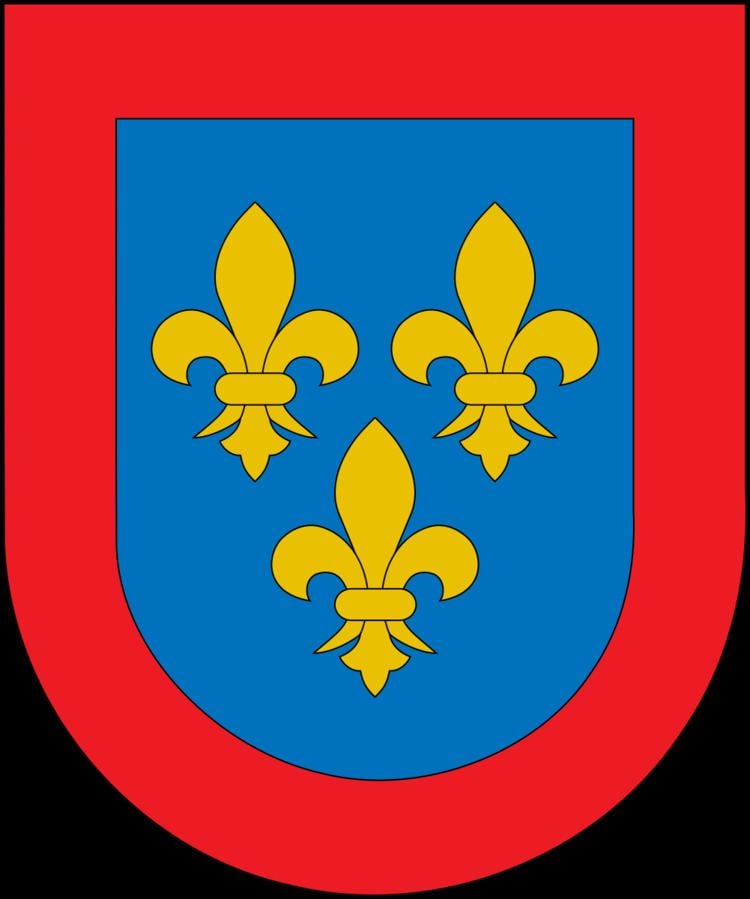 | ||
Country SpainFormer countries Duchy of Parma Two Sicilies Estates Royal Palace of Madrid (seat)Royal Palace of El Pardo (private residence)El EscorialRoyal Palace of AranjuezLa GranjaRoyal Palace of RiofríoRoyal Palace of La Almudaina Titles Monarch of Spain (and relateds)King of the Two Sicilies (claim)Duke of Parma (claim) Style(s) "His/Her Majesty""His/Her Royal Highness""His/Her Grace" Founded November 16, 1700; 316 years ago (1700-11-16) | ||
The House of Bourbon-Anjou (or simply House of Bourbon-Spain), is the current Spanish Royal Family. It consists of the present king, the queen consort, their children and their parents. The Spanish royal family belongs to the House of Bourbon. The membership of the Royal Family is defined by royal decree and consists of: the King of Spain, the monarch's spouse, the monarch's parents, and the heir to the Spanish throne.
Contents
- Titles and styles
- Members of the Royal Family
- Members of the Kings Family
- House of Bourbon Two Sicilies
- Public role
- References
The Spanish Royal Family should not be confused with the Family of the King, which refers to the extended family of the monarch.
Titles and styles
The titles and styles of the Royal Family are as follows:
Members of the Royal Family
Members of the King's Family
House of Bourbon-Two Sicilies
* Member of the Royal Family (as opposed to the Family of the King, or extended family)
Public role
Members of the Spanish Royal Family are often asked by non-profit charitable, cultural, or religious organizations within and without Spain to become their patrons, a role the Spanish constitution recognizes and codified in Title II Article 62 (j). It is incumbent for the monarch "to exercise the High Patronage of the Royal Academies". Royal patronage conveys a sense of official credibility as the organization is scrutinized for suitability. A royal presence often greatly raises the profile of the organization and attracts media publicity and public interest that the organization may not have otherwise garnered, aiding in the charitable cause or cultural event. Royalty make use of their considerable celebrity to assist the organization to raise funds or to promote government policy.
Additionally, members of the royal family may also pursue their own charitable and cultural interests. Queen Sofía devotes much of her time to the Queen Sofia Foundation (Fundación Reina Sofía); while King Felipe chairs the Prince of Asturias Foundation (Fundación Príncipe de Asturias), which aims to promote "scientific, cultural and humanistic values that form part of mankind's universal heritage."
The Prince of Asturias Foundation holds an annual awards ceremony acknowledging the contributions of individuals, entities, and/or organizations from around the world who make notable achievements in the sciences, humanities, or public affairs. King Felipe serves as president of the Codespa Foundation, which finances specific economic and social development activities in Latin American and other countries, and serves as president of the Spanish branch of the Association of European Journalists, which is composed of achieving communications professionals. King Felipe also serves as honorary chair of the Ministry of Culture National Awards Ceremonies.
Infanta Elena, Duchess of Lugo, Juan Carlos' elder daughter, is the Director of Cultural and Social Projects of Mapfre Foundation, while Infanta Cristina, Juan Carlos' younger daughter, served as the Goodwill Ambassador to the United Nations for the 2nd World Assembly on Ageing, and is a member of the Dali Foundation Board of Trustees, president of the International Foundation for Disabled Sailing, and Director of Social Welfare at the La Caixa Foundation in Barcelona where she lives with her family.
King Juan Carlos, Queen Sofia, and Infanta Cristina are all members of the Bilderberg Group, an informal think-tank centered on United States and European relations, and other world issues.
